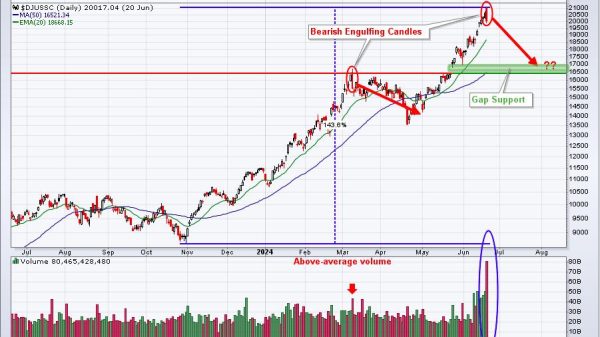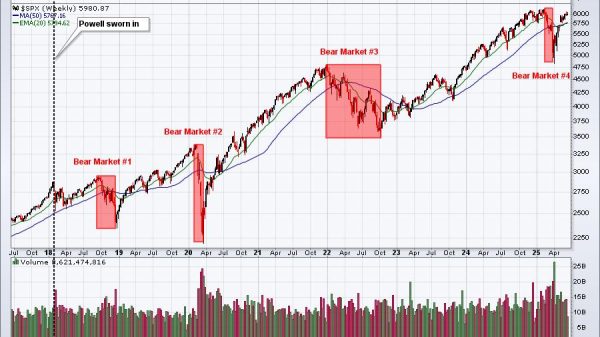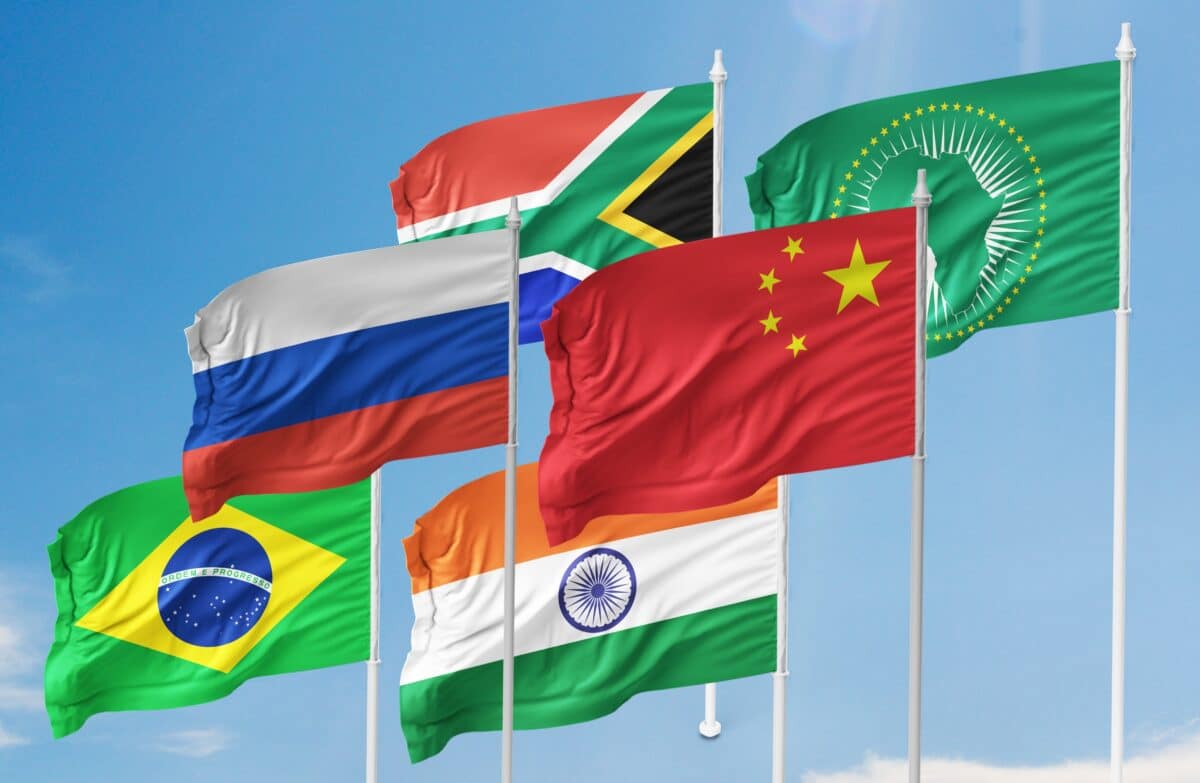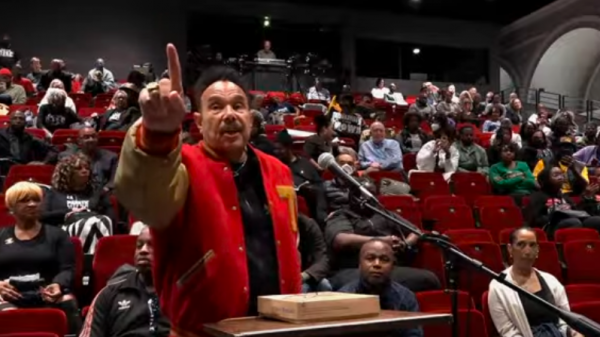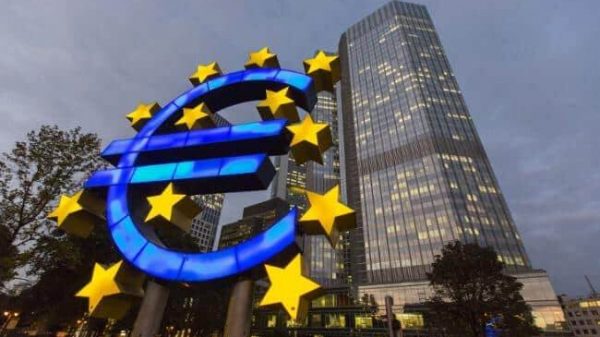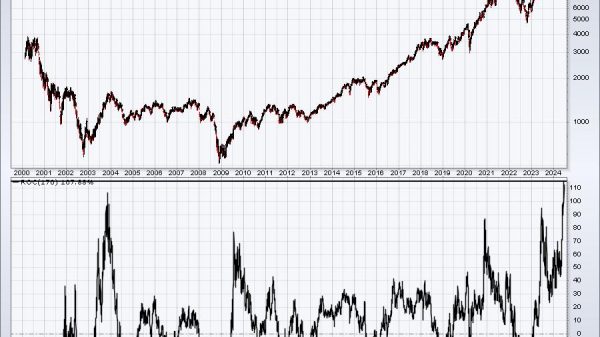Who are the brics, and what are they building?
BRIC is an acronym which was first coined in 2001 by Goldman Sachs economist Jim O’Neill to describe four fast-growing economies that he predicted would collectively dominate the global economy by 2050. These were, respectively Brazil, Russia, India, and China. South Africa joined later in 2010, and then BRIC became BRICS. Now if the truth be told, I believe that there was more than a little tongue in cheek in this prediction. I mean, here he was, this economist predicting four economies which “will collectively dominate the global economy by 2050,” and the United States (US) was not even mentioned among them. Seriously? In fact, I am sure he was not being totally serious. But it was his opinion, and I suppose we must respect this. But then maybe this BRIC statement should be seen for what it really was. Not so much a serious prediction as someone working at a major merchant bank and looking to drum up some interest in what are often referred to as “emerging economies.” And perhaps that promoted interest would enable Goldman Sachs to sell some more unit trusts dealing in Russia and India and the rest of them. As in many areas of life, if one wants to understand what is going on, one needs to follow the money.[members_only]
But since those early days, BRIC events have taken on a life of their own. It appears that the four BRIC players enjoyed the interest, the press coverage, the visits by important economists and the detailed attention now being paid to their prospects for the future. And slowly, but surely, they began to believe all the hype and the spin. And therefore, they decided to formalise the BRIC club in 2006. They did this because behind all the hype and spin, a very deep need was being met. That of recognition, and prestige, and being part of something big, having, maybe not close friends, but some sort of partnership on the world stage. Because at the time, there was no guarantee that these economies were anything special at all. Let’s examine them one by one. Brazil’s economy has consistently disappointed analysts. It has such an abundance of resources such as wood, minerals, agricultural lands, and yet the whole idea of Brazil is often reduced to one of unsustainable growth. The Amazon jungle is slashed and burned on a regular basis to produce rich farmlands, but then the denuded ground quickly erodes and washes away. Then the process is repeated elsewhere. Similarly, mines are dug and exploited, polluting, and destroying the surrounding rivers, and then the miners move on and despoil the next area in similar fashion. There appears to be no overall plan or order to make anything which can be preserved, or which can last. If one tries to hold back the rapacious ranchers and miners, one is unlikely to see the next day. It’s the Amazon’s equivalent of the Wild West. And so, the question we can ask today is this. How is there to be any durable economic growth which could see Brazil’s economy becoming a world leader during the next twenty-seven years running up to 2050? And what did Jim O’Neill think he saw back in 2001? For myself, I don’t think he saw a thing, but the Brazilians loved it. Of course, he could have been proven right if only this South American giant had chosen a more sustainable model. And it must be admitted that even the exploitation of natural resources can provide lots of economic growth in the short term. That is, if the natural resources don’t run out first. But it’s not exactly a formula for economic domination. And unfortunately for us all, the slashing of the Amazon jungle has played havoc not only with the Brazilian environment, but it has also released huge amounts of carbon, thus contributing to the climate change affecting the entire planet. So, in the BRIC name, after Brazil comes Russia. After all the economic trials of the 1990s, it appeared that there was scope for optimism for the new century in Russia. President Vladimir Putin was the new leader and he had been in power for two years and things were improving gradually. This was admittedly from a very low base. For example, in August 1998, Russia had defaulted on its sovereign debt, causing widespread financial panic. But by 2001 Russia’s economy appeared to be humming along, with lots of demand for its principal exports, namely oil, gas, and wheat. As a result, a certain amount of Jim O’Neill’s optimism was maybe understandable at the time. However, the experiences of foreign businessmen over the next few years were to dampen these sentiments. It would have been hard for an outsider to realise it at the time in 2001, but under Putin, Russia had become a kleptocracy where those at the top were systematically creaming off vast amounts of wealth for their own consumption, and to finance President Putin’s pet projects, leaving precious little to invest on behalf of the average Russian. As a result, this was not a great time to be an investor in Russia. The international financier Bill Browder was one of the first to notice this around 2005. His Hermitage Capital Management Investment Trust was one of the biggest foreign investors in Russia, but at that time he began to find that he was denied a Russian visa to be allowed back into the country. The Russian state had begun to take a different turn. Foreign investors would henceforth have to do things Putin’s way, or they would find out that they would not be allowed to do anything. Foreign wars were to follow, against Georgia in 2008, and Ukraine from 2014 to the present day. These have meant that any spare cash in Russia is being spent on guns, and there is not much left over to buy any butter. If things carry on as they are at present, there is zero hope of Russia being any sort of dominant force in the global economy at any point in the future. Jim O’Neill’s choice of India was easier to comprehend. After years of economic stagnation, India’s economy had been opened up to allow economic competition in 1991 in a process now referred to as economic liberalisation. This complete change from what had gone before was initiated to expand the role of private and foreign investment, which was seen as a means of achieving necessary economic growth and development. These days everyone knows about Western countries outsourcing business processes such as call centres and computer operations to India. This process was well underway by 2001, and it has continued to encompass even more complex operations such as accounting, and doing taxes. In other fields wise economic decisions have been taken to invest in the country’s infrastructure, for example. Roads, railways, bridges, dams, and other projects, such as rockets to the moon and to the sun, no less, have meant that the country has continued to experience a steady growth in its Gross Domestic Product (GDP), and this nation of 1.4 billion people is now firmly on track to become the third most powerful economy in the world by 2030. By that time India will be behind only the US in first place, and China in second place. And since China is already in that lofty second position, we can easily understand why Jim O’Neill chose it as one of his BRIC countries. However, maybe it would not have been so obvious back in 2001. At that time China was in sixth place, behind the US, Japan, Germany, France, and the United Kingdom. However, 2001 was the year in which China gained access to the World Trade Organisation (WTO), and this paved her way towards becoming the “Workshop of the World” in the 21st. Century so far. In 2010, South Africa began efforts to join the BRIC grouping, and it officially became a member towards the end of that year. Maybe holding the FIFA World Cup helped? After being formally invited by China to join the club and after being subsequently accepted by the other BRIC countries, the group was renamed BRICS, with the “S” standing for South Africa. I wonder if South Africa was invited simply because the other four members decided that they wanted an “S” to make the name sound better? Is this a harsh statement? I don’t think so. Because it’s hard to see how South Africa fits in with the others. This country was a jewel in the past with all its natural resources, such as gold, diamonds, and various other minerals. It also has a beautiful climate which is just right for a whole range of agricultural production. But corruption and mismanagement of its economy have meant that it has become somewhat of an economic basket case these days. For example, Cape Town is a beautiful modern city, or at least it was last century. Now it is hard to get a constant electricity supply there. Even worse, it is often impossible to get running water. And let’s not even discuss the sewage crisis affecting Durban as the infrastructure breaks down. And rampant crime is pretty much out of control. While these are not problems unique to South Africa, nonetheless, among all this chaos one must wonder to what extent it could really become any sort of dominant force in the global economy. But maybe that doesn’t matter anymore. So thus far, there are five BRICS members, and they are happy to have their club on the world stage. Leaving aside what might happen by 2050, there are two of them which meet the criteria of dominating the global economy at present, and there are the three others which most decidedly do not. Oh well, two out of five is not bad, I suppose. But the odd thing is that, as was mentioned earlier, the whole BRICS idea has gone straight to certain people’s heads, and it is now considered as another presence on the world scene, a rival organisation to such groups as the European Union (EU), and the World Bank. It is not hard to see how this idea of a separate club has played out. Everyone wants friends, right? And everyone wants influence as well, right? Therefore, China invited South Africa to join at a time when the Chinese were beginning to develop their interests overseas, and in Africa in particular. This centred around the Belt and Road Initiative whereby China would loan lots of money to various countries in order that these countries could build expensive things such as ports, railways and roads. Terms of these loans were often quite onerous to the loanee and favourable to China, featuring high interest rates and the requirement that Chinese construction companies should oversee the various projects. But the fact that China was a founding member of this new BRIC club probably influenced some countries to accept those Chinese loans. As it happens, word of the fame of the BRICS has now spread far and wide. The latest news is that the following counties now want to join up: they are Saudi Arabia, Iran, Ethiopia, Egypt, Argentina, and UAE. In total, that would make this collection the BEIRICEUSAS. Well, the Saudis don’t generally get on with the Iranians because they like a different brand of Islam (Sunni Islam, as opposed to Iranian Shi-ite Islam), and the same could be said of the Emiratis. Argentina is always having economic problems of one type or another, as are Ethiopia and Egypt, so I don’t think this enlarged club will end up as an economic powerhouse either. But then again, that may not be the point. China wants new members to increase the power of the collective whole. Beijing wants to admit more countries from the global south to counteract the Western allies in the G7. At the end of the day, I suppose it’s up to the current five members as to who can join and what the future rules will be. The word on the street is that India, South Africa, and Brazil are all a bit sceptical. After all, if one allows too many people into one’s exclusive club, then it’s no longer exclusive, is it? And Russia is in such a state of weakness at present, being mired in the mud of Ukraine, that it hardly has any say. In fact, it is greatly beholden to China’s support in their “joint friendship without limits.” So, Russia has been and will be going along with the Chinese viewpoint. If all this sounds a weak basis for having an alliance on the world stage, that is indeed the truth of the matter. At its heart it is an anti-club. That is, it is anti the West. One of the BRICS’s functions is to provide a platform for members to criticise, often with justification, the way “Western” institutions behave. For example, there is the World Bank, the International Monetary Fund (IMF) and the United Nations (UN) Security Council, all of whom tend to sideline the “global south”, which is a term used to describe developing countries. Or at least, that is what the Chinese think. Their behaviour is, of course, beyond reproach. At the recent summit in South Africa, India talked of the “concentration” of global economic power that was “leaving too many nations at the mercy of too few”. That is, developing nations are at the mercy of the West. But I doubt that this is altruism on the BRICS’s part. They would take advantage of someone’s weakness as soon as anyone else if they had the chance. And China has done so on many occasions. We could ask the good people of Tibet. But the Chinese love any stick with which they can hit the West. Being a member of the BRICS is also a great source of prestige, especially for struggling members. On average the GDP of Brazil, Russia and South Africa has grown by less than 1% annually since 2013 (versus around 6% for China and India). But being the only Latin American country and the only African country in the group respectively allows Brazil and South Africa to project continental influence: President Ramaphosa of South Africa invited an enormous number of African leaders to the Johannesburg summit and was able to bask in his importance. And Russia, the Pariah of the Year, needs the BRICS more than ever to attempt to overcome its isolation on the world stage. So, the new club will go forward in some form or other. However, before that happens, it is worth considering that even now, all is not well in the land of the BRICS. We are referring to the large amount of distrust and even open conflict which currently exists among certain of the current five members. For example, India and China have troops who are constantly facing off against one another on their current long and mountainous border. Skirmishes there have led to soldiers being killed in the past three years. Therefore, one must really wonder on what basis can their leaders sit down and talk about having an anti-Western alliance? We should also note that in military matters, India is moving much more towards the West, having become a member of the Quad. In fact, it has done so principally because of Chinese aggression and expansion, both on its borders and to its South in the Indian Ocean. When it comes to economics, the BRICS would love to change the current global order, because it would make them less reliant on others and consequently more important. It was in 2009 that Russia had hosted the first BRIC summit and declared that the 2008 global financial crisis was proof that the world’s top emerging economies needed to collaborate to prevent the West from controlling the destiny of the global economy and their own development. It’s important to note that 2008 was also the year that Russia had invaded Georgia. This announced its dissociation from the Western values system and was the beginning of its plans to restore power over former Soviet states while cultivating allies in Asia and beyond. From Russia’s perspective, the BRIC became an anti-Western political platform that it wanted to support. Since then, Mr Putin has claimed the bloc was working on a common BRICS reserve currency. Of course, he would love that as it would now mean that Russia could escape relying upon US dollars to settle its international trade. Western sanctions since 2014 have made things very difficult for Russia in a US dollar dominated world. But what can Russia really do at present? De-dollarization as a policy could be achieved only if the BRICS adopt a common currency. This would look something like the Euro, which was launched in 1999 by participating European Union members. However, introducing a new currency doesn’t just require issuing bank notes and declaring them ready for use. It requires genuine economic convergence among participating nations through a common market. This would be prohibitively difficult for the BRICS to establish considering the deep divergences among their economies. They lack a common economic structure and governance system. They don’t even occupy the same continent, let alone share borders. Developing an efficient common market would require building new infrastructure, including security and insurance systems to protect trading routes. This would be nearly impossible for the BRICS because none of its members are global naval powers. However, for now it is all just talk. Pie in the sky. Even if it were practical, no BRICS member would give up the power currently held by their own central banks. For years members have consistently and regularly guarded their own power at their own economic institutions. And anyway, the economies of Brazil, Russia and South Africa are far too weak to get into these kinds of financial arrangements. There is a reason why the mighty US dollar is the reserve currency for world trade, and that is because the mighty US economy stands right behind it. Even China with its strong Yuan does not come anywhere close to being able to do a similar job, and anyway, the Chinese economy appears to be going through a crisis at present. Maybe they are not as strong as they think they are. So where does that leave the BRICS? One might also question how countries which are so different politically could ever get together in any sort of alliance? Russia and China are autocracies that disdain liberal freedoms. Brazil, India, and South Africa are by contrast democracies, albeit ones that appear to be flawed to some extent. And what do the BRICS make of Russia’s invasion of Ukraine? It’s the uncomfortable elephant in the room. The bloc used to have a strong emphasis on sovereignty, which was originally yet another way to draw a contrast with what they saw as an interventionist West. But now this all looks rather hollow after Russia’s invasion of its neighbour. There again, what kind of alliance can be built when the members put their own interests before those of the club? And Russia’s invasion of Ukraine has also upset global supply chains of grains and cereals coming from Ukraine and going to those very global south countries which BRICS claims to support. President Putin has claimed that the disruptions are all Ukraine’s fault. However, even though they might not say so directly, it is hard to see how the hungry nations of the global south will continue to believe this. Further problems arise from the fact that India sees itself as a rival to China for leadership of this global south. It has used its presidency of the G20 this year to amplify the concerns of developing countries regarding climate finance and international institutions. It would not want to play second fiddle to a Chinese effort to woo this same group. And so, what we can see with the BRICS is a nice idea of using one’s wealth and status to set up a new club, or a new order in the world. But what is it really going to be like? Frankly, the closer one examines it, the more it looks like a poorer, non-Western version of the Western clubs. A carbon copy, if you will, or even hoping to be a possible rival. The title of this article asked, “Who are the BRICS, and what are they building?” Well, they are five very different countries, with five very different outlooks. And if the BRICS club were to be represented by a statue of a man, like the one in King Nebuchadnezzar’s dream, one might well predict that it would also have feet of clay.[/members_only]
The post Who are the brics, and what are they building? appeared first on FinanceBrokerage.






